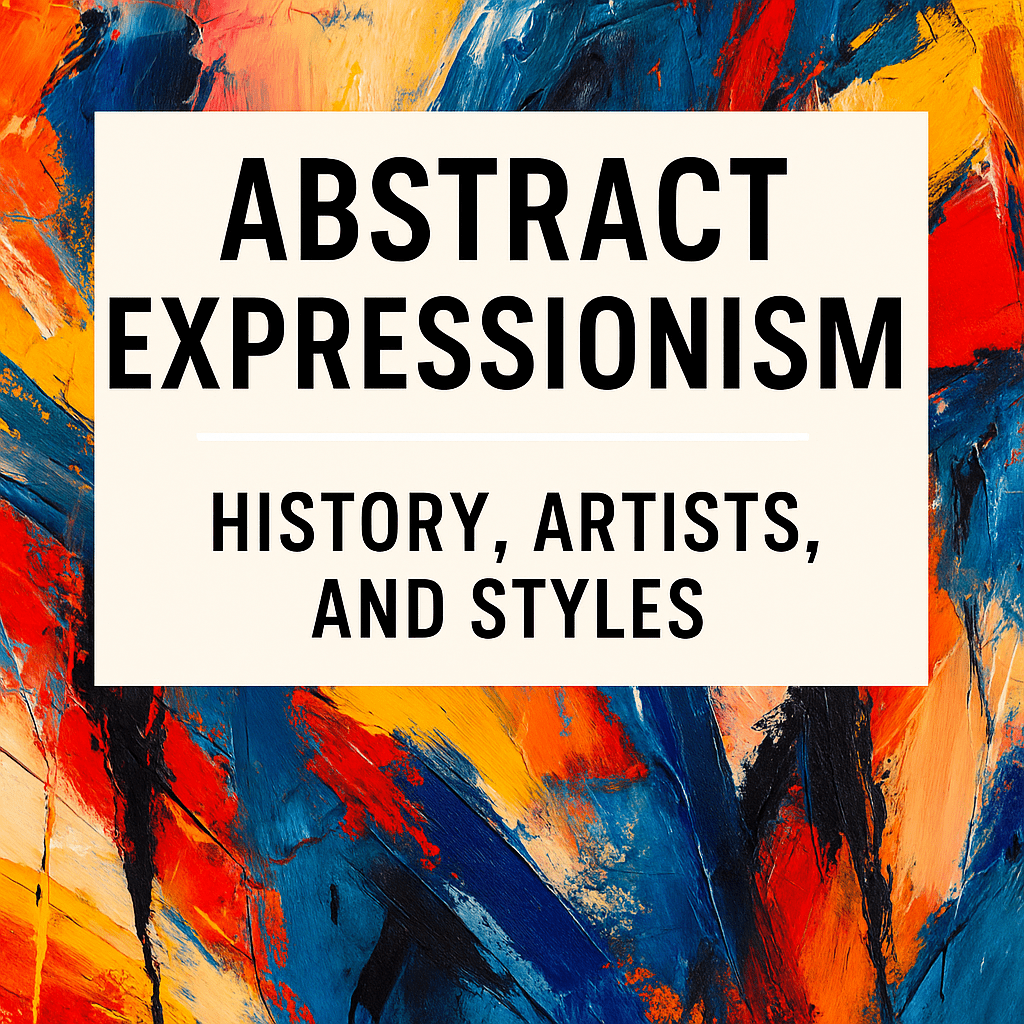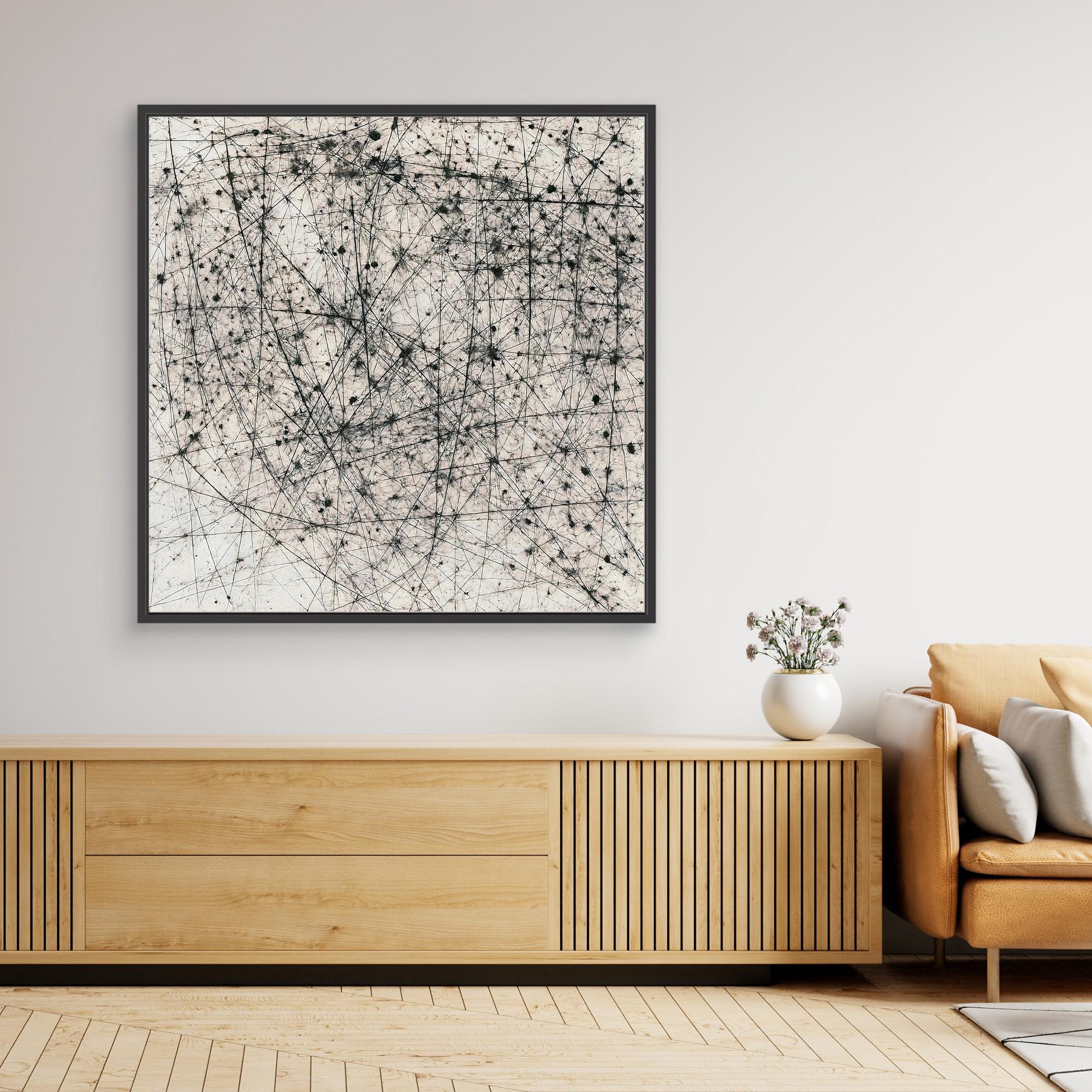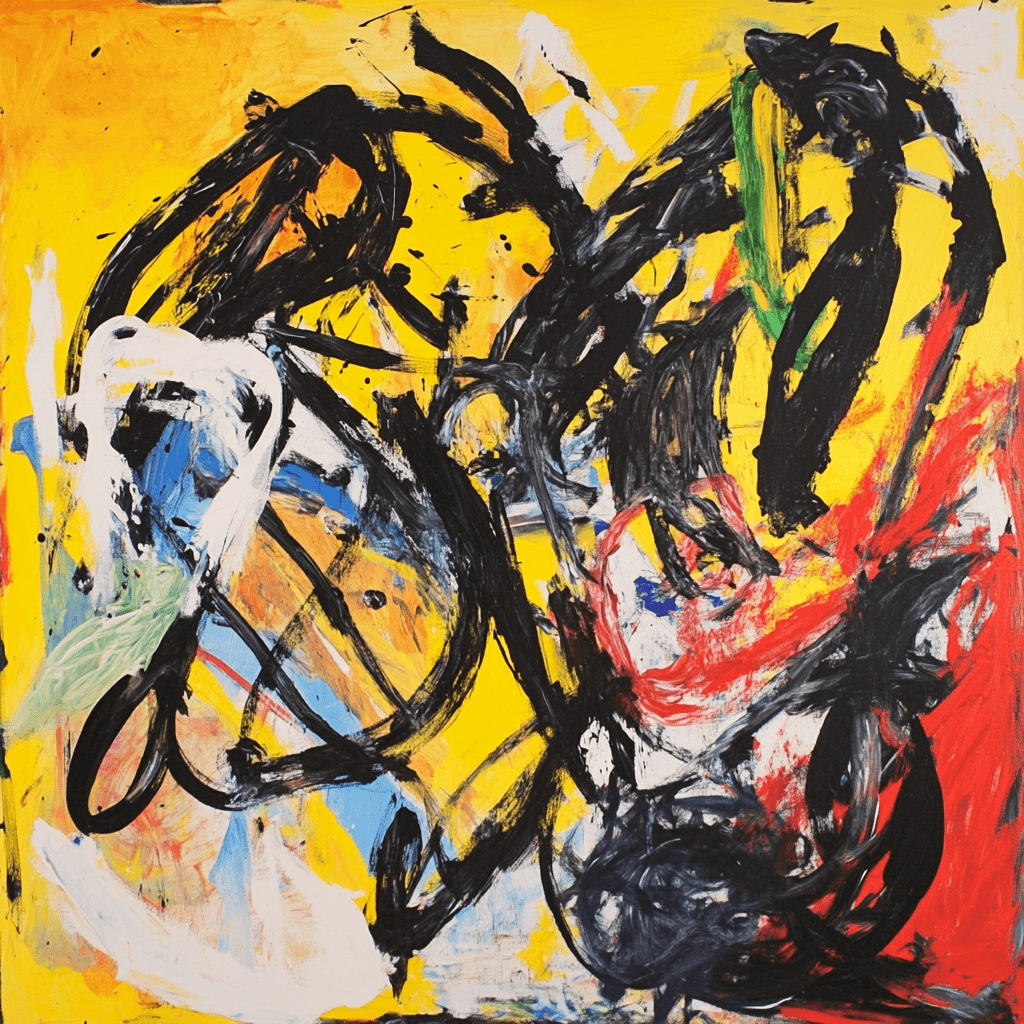Abstract Expressionism: History, Artists, and Styles
Abstract Expressionism stands as a pivotal art movement that reshaped the landscape of modern art in the mid-20th century. Emerging in the 1940s, primarily in New York City, this movement broke away from conventional forms of art, ushering in a new era of creativity characterized by spontaneous, gestural brushstrokes and an emphasis on the subconscious. This article delves into the origins of Abstract Expressionism, its key characteristics, influential artists, and its lasting impact on the art world.
What is Abstract Expressionism and How Did It Emerge?
Origins of Abstract Expressionism
The origins of Abstract Expressionism can be traced back to the tumultuous 1940s, a time when the world was recovering from the ravages of World War II. Artists sought new ways to express the complexities of human emotion and experience. This led to the birth of Abstract Expressionism in America, particularly within the New York School, a collective of avant-garde artists. Influenced by European abstract art and the Surrealist movement, Abstract Expressionist artists aimed to explore the depths of the human psyche through their work. The movement marked a departure from traditional forms of American painting, emphasizing personal expression and emotional intensity.
Key Characteristics of Abstract Expressionism
The key characteristics of Abstract Expressionism include an emphasis on spontaneity, emotion, and the use of large canvases. Artists like Jackson Pollock revolutionized the art scene with their innovative techniques, such as drip painting, where paint was poured or flicked onto the canvas, creating dynamic compositions. These works often displayed a sense of movement and energy, achieved through bold brushstrokes and the use of vibrant colors. Abstract Expressionist paintings were less concerned with depicting reality and more focused on conveying the artist's inner turmoil and subconscious mind.
The New York School's Role in Abstract Expressionism
The New York School played a crucial role in the development and promotion of Abstract Expressionism. This group of artists, including Jackson Pollock, Willem de Kooning, and Mark Rothko, among others, became influential figures in the art world. Their shared commitment to innovation and exploration of new artistic techniques solidified New York City's status as a hub for contemporary art. The movement also attracted the attention of prominent art institutions such as the Museum of Modern Art and the Metropolitan Museum of Art, which began to recognize and exhibit the work of Abstract Expressionist painters, further cementing its place in art history.
Who Were the Leading Abstract Expressionist Painters?
The Influence of Jackson Pollock
Jackson Pollock stands as one of the most iconic figures in Abstract Expressionism. His revolutionary approach to painting, particularly his development of the drip technique, transformed how art was perceived and created. Pollock's method of dripping and pouring paint onto large canvases laid flat on the ground allowed him to engage with his work physically, creating pieces filled with energy and chaos. This technique challenged traditional notions of composition and control, making Pollock a central figure in the Abstract Expressionist movement.
The Impact of Mark Rothko and Color Field Painting
Mark Rothko's contribution to Abstract Expressionism was monumental, particularly through his development of color field painting. Rothko's work focused on large blocks of color that seemed to float on the canvas, evoking deep emotional responses from viewers. His use of color as a primary means of expression set him apart from other Abstract Expressionists. Rothko aimed to create an intimate, spiritual experience for the viewer, emphasizing the power of color and form over representational imagery.
Contributions of Willem de Kooning and Clyfford Still
Willem de Kooning and Clyfford Still were also instrumental in shaping Abstract Expressionism. De Kooning's work often combined elements of abstraction with figurative forms, resulting in dynamic compositions that explored the human form in a new light. His energetic brushstrokes and use of vivid colors contributed to the movement's emphasis on spontaneity and emotion. Similarly, Clyfford Still's bold, jagged forms and use of color created a sense of tension and drama, further pushing the boundaries of abstract art and influencing future generations of artists.
How Did Action Painting Shape the Abstract Expressionism Art Style?
Understanding Action Painting Techniques
Action painting, a term often associated with Abstract Expressionism, refers to the energetic and dynamic techniques used by artists to convey movement and emotion. This approach involved spontaneous gestures and vigorous application of paint, often with the canvas placed on the floor. Action painters like Jackson Pollock and Willem de Kooning used their entire bodies to interact with their work, creating a direct connection between the artist and the canvas. This method emphasized the process of creation as much as the finished piece, highlighting the physicality and performance aspect of painting.
Role of Brushstrokes and Drip Techniques
Brushstrokes and drip techniques were central to the action painting style, allowing artists to create works that were both chaotic and controlled. The use of brushstrokes varied from aggressive, sweeping motions to delicate, intricate lines, each carrying the artist's emotional intent. Drip techniques, popularized by Pollock, involved allowing paint to flow freely from the brush or can onto the canvas, resulting in unpredictable patterns and textures. These techniques challenged traditional methods of painting and emphasized the importance of spontaneity and chance in the creative process.
Impact of Action Painters on Modern Art
Action painters had a profound impact on the development of modern art, influencing a wide range of movements that followed. Their emphasis on process, gesture, and the physical interaction with the canvas paved the way for future art forms like performance art and installation art. The legacy of action painting can be seen in the work of contemporary artists who continue to explore themes of expression and movement, demonstrating the enduring influence of Abstract Expressionism on the art world.
What are the Key Characteristics of Abstract Expressionism Art?
Expression Through Color and Form
Abstract Expressionism is characterized by its bold use of color and form to convey emotion and meaning. Artists like Mark Rothko and Barnett Newman utilized large areas of color to create a sense of depth and intensity, inviting viewers to experience art on an emotional level. The movement's focus on non-representational forms allowed artists to explore the possibilities of color and shape as primary vehicles for expression, breaking away from traditional narrative and representational art.
Emphasis on Spontaneity and Emotion
Spontaneity and emotion are at the heart of Abstract Expressionist art. Artists sought to capture the immediacy of their emotional responses and the unpredictability of their creative processes. This often resulted in works that were raw, unrefined, and deeply personal. The movement's emphasis on the artist's internal experience over external representation marked a significant shift in the art world, influencing how art was created and perceived.
The Use of Large Canvases and Innovative Techniques
The use of large canvases was a hallmark of Abstract Expressionism, allowing artists to fully engage with their work and create immersive experiences for the viewer. This scale, combined with innovative techniques like drip painting and color field painting, enabled artists to explore new dimensions of abstraction and expression. The movement's willingness to experiment with materials and techniques opened up new possibilities for artistic creation, setting the stage for future developments in contemporary art.
How Did Abstract Expressionism Influence the Art World?
The Movement's Legacy in American Art
Abstract Expressionism left a lasting legacy on American art, establishing the United States as a leading force in the global art scene. The movement's embrace of innovation and individual expression resonated with artists across the country, inspiring new generations to push the boundaries of artistic creation. It marked a cultural shift, positioning American art as a significant player on the international stage and paving the way for subsequent movements like Pop Art and Minimalism.
Abstract Expressionism's Place in the Timeline of Art History
Within the timeline of art history, Abstract Expressionism represents a pivotal moment of change and experimentation. It challenged established norms and redefined the parameters of what art could be, influencing countless artists and movements that followed. Its impact can be seen in the evolution of contemporary art, where elements of abstraction, emotion, and spontaneity continue to play a crucial role. The movement's legacy is preserved in institutions like the Metropolitan Museum of Art, where its works remain a testament to its enduring influence.
Exhibitions and Impact on the Metropolitan Museum of Art
The Metropolitan Museum of Art and other major institutions have played a significant role in showcasing and preserving the works of Abstract Expressionist artists. Through exhibitions and collections, the museum has helped to highlight the movement's importance and its impact on the art world. These exhibitions provide audiences with the opportunity to engage with the emotive power and innovative techniques of Abstract Expressionism, ensuring that its legacy continues to inspire and resonate with future generations of artists and art lovers.
Enhance Your Space with Unique Modern Masterpieces
Are you inspired by the innovative mediums and conceptual depth highlighted in our exploration of contemporary art? You’re not alone! Today’s art enthusiasts are seeking cultural relevance and emotional connections in their artwork. However, finding pieces that resonate with modern themes and fit your unique style can be a challenge. That’s where we come in!
At Rossetti Art, we specialize in canvas prints, original paintings, and modern sculptures that celebrate the spirit of now. Each piece created by Chiara Rossetti brings a personal touch that connects deeply with current social narratives—just like the modern masterpieces discussed in the article. Don’t miss out on the chance to elevate your home decor with breathtaking artwork that speaks to your values and aesthetic. Explore our collection today and find your perfect piece! Act now, and transform your space into a gallery of inspiration!
FAQ
Q: What is the history of Abstract Expressionism?
A: Abstract Expressionism emerged in the 1940s and 1950s as a pivotal American art movement. It developed primarily in New York City, often referred to as the "New York School," and marked a shift in the center of the art world from Europe to the United States. This movement was characterized by a focus on the act of painting itself, with a strong emphasis on spontaneity and individual expression. Many abstract painters within this movement were influenced by the surrealist idea that art should come from the unconscious mind.
Q: Who are some key artists associated with Abstract Expressionism?
A: Key artists associated with Abstract Expressionism include Jackson Pollock, known for his innovative drip paintings, Mark Rothko with his signature color field paintings, and Willem de Kooning. Other notable figures include Barnett Newman, Lee Krasner, Robert Motherwell, and Helen Frankenthaler. These artists played a significant role in developing the abstract expressionist style and contributed to its impact on both American and European art.
Q: What techniques are commonly used in Abstract Expressionism?
A: Abstract Expressionism is known for its diverse range of techniques. Artists like Jackson Pollock popularized action painting, which involves energetically dripping or splattering paint onto a canvas. Another prominent style within abstract expressionism is color field painting, characterized by large areas of a single color and employed by artists like Mark Rothko. These techniques emphasized the physical act of painting and the emotional intensity of the work.
Q: How did the New York School influence Abstract Expressionism?
A: The New York School was instrumental in the development of Abstract Expressionism. This group of artists, working in New York City, sought to create a new technique and style of abstract painting that broke away from traditional European art. They were heavily influenced by the cultural and social climate of post-war America, which encouraged experimentation and innovation in the arts. Their work helped establish New York as the center of the art world during this period.
Q: What distinguishes Abstract Expressionism from other art movements?
A: Abstract Expressionism is distinguished by its focus on the expressive potential of the act of painting. Unlike earlier movements, it emphasized individual emotion and the artist's personal vision. This American abstract movement also rejected the formal constraints of European art, embracing improvisation and spontaneity. The movement's impact of abstract expressionism can be seen in its divergence from representational art, favoring instead an exploration of form and color.
Q: How did Helen Frankenthaler contribute to Abstract Expressionism?
A: Helen Frankenthaler was a pivotal figure in the Abstract Expressionist movement. She is best known for her development of the "soak-stain" technique, where she used thinned paint to create translucent washes of color on unprimed canvas. This innovative approach influenced many abstract and color field painters and helped to expand the possibilities of abstract painting.
Q: What role did Robert Motherwell play in Abstract Expressionism?
A: Robert Motherwell was a key member of the American abstract expressionist community. He is known for his "Elegy to the Spanish Republic" series, which blended gestural abstraction with a deep political and philosophical engagement. Motherwell's work often explored themes derived from European painting and literature, contributing to the intellectual depth of the movement.
Q: How did the style of abstract expressionism evolve over time?
A: The style of abstract expressionism evolved through the exploration of different techniques and ideas by its artists. Initially focused on action painting and the physicality of the act of painting, the movement later included color field painting, which emphasized emotional resonance through color. As new artists joined the movement, they introduced variations and nuances that expanded its scope and influence within abstract expressionism.
Q: What was Lee Krasner's impact on Abstract Expressionism?
A: Lee Krasner was an influential abstract expressionist artist known for her dynamic compositions and inventive use of color and form. Her work often incorporated elements of collage and was characterized by its rhythmic energy. Krasner was instrumental in pushing the boundaries of the movement, and her contributions helped to highlight the role of women in the development of American abstract art.
Q: How did Abstract Expressionism influence later art movements?
A: Abstract Expressionism had a profound impact on later art movements by paving the way for a more liberated and experimental approach to art-making. It influenced the development of movements such as Minimalism and Pop Art, which reacted against its emotive intensity but retained its emphasis on innovation. The movement also encouraged a global dialogue between American and European artists, enriching the evolution of modern art.




Leave a comment
This site is protected by hCaptcha and the hCaptcha Privacy Policy and Terms of Service apply.